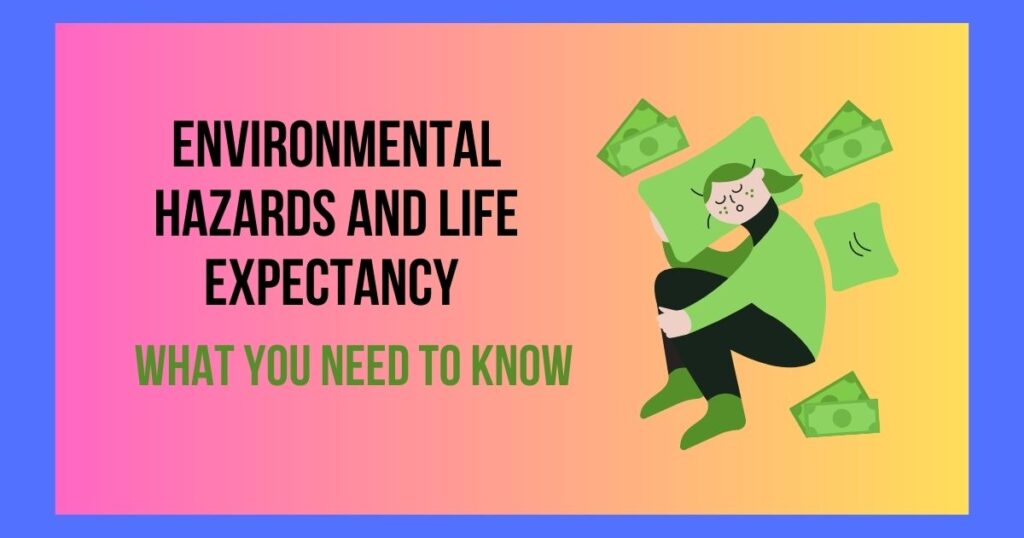It’s no secret that the length and quality of one’s life can be greatly impacted by their income and wealth, as well as the location one lives in. Recent studies have shown that people with higher incomes and wealth tend to live longer than those with lower incomes and wealth. In this article, we’ll explore the various factors that contribute to this life expectancy gap and discuss potential policy solutions to help bridge the gap.

Access to Healthcare
One of the most significant factors contributing to the life expectancy gap is access to healthcare. People with higher incomes and wealth can afford better quality healthcare and have better access to medical resources. They can receive diagnoses and treatments earlier, which can lead to better health outcomes and longer life. However, those with lower incomes and wealth often cannot afford to see a doctor or receive adequate medical treatment, leading to more severe health issues and a shorter life expectancy.
Environmental Factors
Environmental factors, such as pollution and unsafe drinking water, can also impact life expectancy. People living in areas with higher levels of pollution and environmental hazards tend to have lower life expectancies than those living in areas with better air and water quality. For example, a study published in the journal Environmental Science & Technology found that people living in neighborhoods with higher levels of air pollution had a higher risk of premature death than those in cleaner areas.
Education and Knowledge
Education and knowledge about health and wellness are other factors that can contribute to a longer life expectancy. People who have higher education levels and more knowledge about healthy living are more likely to make better lifestyle choices, such as exercising, eating a healthy diet, and avoiding harmful substances. According to a study published in the Journal of Health Economics, people with more education have lower mortality rates than those with less education.
Stress Levels
Stress is another significant factor that can impact life expectancy. People with lower incomes and wealth tend to experience higher levels of stress due to financial insecurity and lack of access to resources. This stress can lead to numerous health issues, including heart disease and cancer, which can lower life expectancy. According to a report by the American Psychological Association, stress has been linked to many health problems, including cardiovascular disease, immune system dysfunction, and premature death.
Social Support
Finally, social support is another important factor in life expectancy. People with higher incomes and wealth tend to have stronger social networks and support systems, which can help reduce stress and improve mental health. Strong social support has been linked to lower levels of stress and better health outcomes, which can lead to a longer life expectancy.
Policy Solutions
Addressing income inequality, improving access to healthcare and education, and addressing environmental hazards can help reduce the life expectancy gap between wealthy and lower-income individuals. This requires policy solutions at the national, state, and local levels. For example, implementing policies that provide affordable healthcare to all, promote education, and reduce environmental hazards can have a significant impact on reducing the life expectancy gap.
Real-World Examples
There are real-world examples of how these factors impact life expectancy. In the United States, for example, the life expectancy gap between the wealthiest and poorest individuals can be as much as 15 years. A study published in the Journal of the American Medical Association found that the wealthiest 1% of Americans live an average of 10-15 years longer than the poorest 1%. Additionally, research from the World Health Organization has found that people living in poverty in low-income countries have a significantly lower life expectancy than those living in higher-income countries.
Conclusion
The life expectancy gap between the wealthy and the lower-income individuals is a complex issue that requires comprehensive solutions. Addressing income inequality, improving access to healthcare and education, and reducing environmental hazards are crucial steps toward bridging the gap. By implementing policies that prioritize the health and well-being of all individuals, we can ensure that everyone has an equal opportunity to live a longer and healthier life. It’s time we acknowledge the impact that wealth and location have on our health and take action to create a fairer and healthier society for all.
Frequently Asked Questions (FAQs)
What are environmental hazards?
Environmental hazards refer to any natural or man-made factors that can harm the environment and the health of individuals living in that environment. These hazards include air pollution, water pollution, climate change, natural disasters, and exposure to toxic chemicals.
How do environmental hazards affect life expectancy?
Exposure to environmental hazards can have significant impacts on health and can reduce life expectancy. For example, air pollution can cause respiratory problems and increase the risk of heart disease, while exposure to toxic chemicals can lead to cancer and other illnesses.
Who is most at risk of the health impacts of environmental hazards?
Low-income communities and communities of color are often disproportionately affected by environmental hazards. These communities may live closer to sources of pollution or have less access to healthcare and other resources to protect themselves from the harmful effects of environmental hazards.
What can individuals do to protect themselves from environmental hazards?
Individuals can take steps to reduce their exposure to environmental hazards by using air filters, drinking clean water, and avoiding exposure to toxic chemicals. They can also support policies that reduce pollution and protect the environment.
What can policymakers do to reduce the impact of environmental hazards on life expectancy?
Policymakers can implement regulations that reduce pollution, invest in infrastructure to protect communities from natural disasters, and increase access to healthcare and other resources to address the health impacts of environmental hazards. By taking action to address environmental hazards, policymakers can help to improve the health and well-being of communities and increase life expectancy.
Can you be more specific about the content of your article? After reading it, I still have some doubts. Hope you can help me.